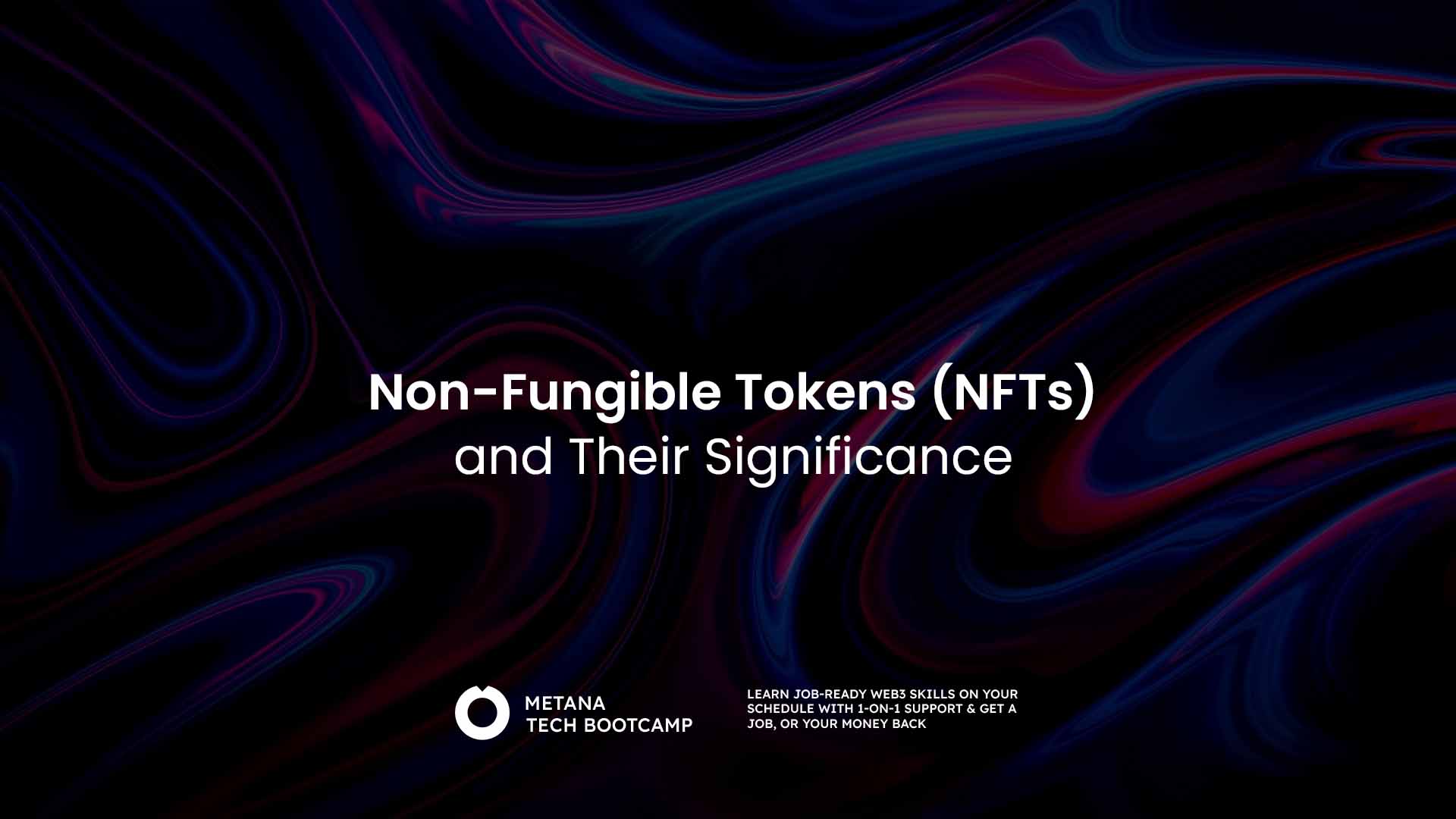NFTs, or Non-Fungible Tokens are special digital tokens that show you truly own a piece of digital content. They’re stored on the blockchain, which keeps them secure and easily verifiable. This gives creators and buyers a reliable way to prove authenticity online.
Key Takeaways
- NFTs are unique digital assets secured on the blockchain, making them verifiable and tamper-proof.
- They establish clear ownership and authenticity for digital items like art, music, collectibles, and virtual assets.
- Smart contracts enable creators to earn royalties on secondary sales, giving them long-term revenue opportunities.
- NFTs open new economic models in gaming, metaverse platforms, and digital marketplaces.
- Beyond digital art, NFTs are expanding into real-world applications such as ticketing, identity, and asset tokenization.
- Despite their potential, challenges like speculation, IP concerns, and environmental impact still exist.
In recent years, Non-Fungible Tokens (NFTs) have captured widespread attention across multiple industries, from art and entertainment to real estate and gaming. These unique digital assets, stored on blockchain networks, are reshaping the way we think about ownership, value, and the digital economy. This article dives deep into NFTs, their underlying technology, and why they matter in today’s rapidly evolving digital landscape.
What Are NFTs?
NFTs, or Non-Fungible Tokens, are digital assets that represent ownership or proof of authenticity of a unique item, whether physical or virtual. Unlike cryptocurrencies such as Bitcoin or Ethereum, which are fungible (interchangeable with each other), NFTs are non-fungible, meaning no two are the same.
These tokens are built on blockchain technology, typically on the Ethereum blockchain using the ERC-721 and ERC-1155 standards. What makes NFTs special is their uniqueness and rarity. Each token contains metadata that distinguishes it from other tokens, making it possible to assign ownership to digital items such as artwork, music, videos, and even virtual real estate.
By 2030, the global Non-Fungible Tokens (NFTs), is predicted to reach $231.98 billion, at an CAGR of over 33% (Source: NFT Stats You Should Know About)
Key Characteristics of NFTs
- Uniqueness: Every NFT has specific information that makes it unique. This is encoded in the NFT’s metadata, which distinguishes it from other tokens and adds to its value.
- Indivisibility: NFTs cannot be divided into smaller units. Unlike cryptocurrencies, which can be broken down into fractions, you either own the entire NFT or you don’t.
- Ownership: The ownership of NFTs is easily verifiable. The blockchain stores ownership information, ensuring that no two people can claim ownership of the same token at the same time.
- Interoperability: NFTs are designed to be used across various platforms, providing flexibility. For example, an NFT used in one gaming ecosystem can potentially be transferred or utilized in another, thanks to shared blockchain standards.
- Immutability and Security: Once an NFT is created, its data cannot be altered or destroyed. This immutability ensures authenticity, and since NFTs live on decentralized blockchains, they offer security from tampering.

The Evolution of NFTs
Although NFTs have gained significant attention over the last few years, their origins can be traced back to early blockchain experiments. In 2012, the concept of “colored coins” on the Bitcoin blockchain explored the idea of representing real-world assets on the blockchain. However, it wasn’t until 2017 that NFTs started gaining mainstream attention with projects like CryptoPunks and CryptoKitties.
CryptoKitties, in particular, played a pivotal role in popularizing NFTs. These digital collectibles allowed users to breed, trade, and sell virtual cats, each with its own set of traits. This marked the beginning of a larger trend toward tokenizing unique digital assets.
How NFTs Work

NFTs use blockchain technology to function. Here is how the process takes place:
Creation: An NFT is created using smart contracts, usually on a blockchain such as Ethereum. These contracts store unique metadata that can include details about the creator, the owner, and the specific attributes of the NFT.
Minting: Minting is the process of turning a digital file into an NFT on the blockchain. This means taking an asset such as a digital artwork, video, or music track and assigning it a token on the blockchain, confirming its existence.
Ownership and Transfer: After minting, the NFT is stored in a digital wallet, and the ownership is recorded on the blockchain. This ownership can be transferred through blockchain transactions, providing clarity and security.
Trading Platforms: Marketplaces such as OpenSea, Rarible, and Foundation allow users to buy, sell, or trade NFTs. These platforms rely on blockchain technology to ensure that ownership records remain accurate and protected.
The Rise of NFT Use Cases
NFTs have proven to be more than just digital art. They have infiltrated various industries, showcasing their versatility and growing importance.
1. Non-fungible tokens and their impact on art
NFTs have disrupted the art world by enabling artists to tokenize their creations. This allows them to sell directly to collectors, bypassing traditional galleries and auction houses. Notable sales, such as Beeple’s “Everydays: The First 5000 Days,” which sold for $69 million, illustrate the enormous potential of NFT art.
Artists can also benefit from smart contracts that enforce royalty payments, ensuring they earn a percentage each time their work is resold.
2. Music and Entertainment
Musicians and creators are using NFTs to bypass traditional distribution models. By minting music NFTs, artists can sell their songs directly to fans, offer exclusive content, and even provide ownership rights to future royalties. NFTs give musicians more control over their work and a new revenue stream beyond streaming services.
For example, Kings of Leon made headlines when they became the first band to release an album as an NFT in 2021, offering exclusive digital perks to buyers.
3. Gaming
The gaming industry has embraced NFTs with open arms. In-game assets, such as skins, weapons, and avatars, are being tokenized into NFTs, allowing players to truly own their digital items. These assets can be traded, sold, or transferred across different games, thanks to blockchain interoperability.
Popular blockchain-based games like “Axie Infinity” and “The Sandbox” are pioneering play-to-earn models, where players earn cryptocurrency and NFTs by participating in the game.
4. Virtual Real Estate
NFTs are also making waves in virtual real estate. Platforms like Decentraland and The Sandbox allow users to purchase and own parcels of land in the metaverse. These virtual properties can be built upon, sold, or rented, and the ownership is secured by NFTs.
As the concept of the metaverse expands, virtual real estate may become even more valuable, creating new opportunities for investors and developers.
5. Tokenization of Physical Assets
NFTs aren’t limited to the digital world. They can also be used to tokenize physical assets, such as real estate, luxury goods, and fine art. By representing physical items as NFTs on the blockchain, ownership can be transferred more easily, and authenticity can be verified.
For example, a piece of fine art can be tokenized, allowing multiple investors to buy shares in the artwork without physically owning it. Similarly, luxury brands are using NFTs to authenticate products and prevent counterfeiting.
The Significance of NFTs in the Digital Economy
1. Redefining Ownership
NFTs are fundamentally changing the concept of ownership. By providing a verifiable way to prove ownership and authenticity, NFTs create new economic models for creators and consumers alike. Digital items, once easily copied and shared, can now have assigned value based on rarity, demand, and creator input.
2. Empowering Creators
Artists, musicians, and other creators no longer need to rely on intermediaries to distribute their work. NFTs offer them a way to directly monetize their content, control how it is used, and benefit from future sales through royalties. This democratization of content distribution is a major shift in industries that have long been controlled by gatekeepers.
3. New Revenue Streams
For businesses and brands, NFTs provide a novel way to engage with consumers and open new revenue streams. From limited-edition products to exclusive experiences, NFTs can be used to offer something unique that resonates with a brand’s audience.
4. Decentralization and Security
Because NFTs are stored on decentralized blockchains, they offer enhanced security and transparency. This makes them resistant to censorship, fraud, and tampering, providing users with confidence in the authenticity and ownership of their assets.
Challenges of NFTs
While NFTs hold vast potential, they are not without challenges:
- Environmental Impact: The minting of NFTs, especially on proof-of-work blockchains like Ethereum, consumes significant energy, leading to concerns about their environmental footprint.
- Speculation and Volatility: The NFT market is highly speculative, with prices for digital assets sometimes reaching astronomical levels. This has led to fears of an NFT bubble, similar to past market booms and busts.
- Intellectual Property Issues: Ownership of an NFT does not always equate to ownership of the intellectual property rights associated with the underlying asset. This has led to confusion and disputes in some cases.
The Future of NFTs
The NFT space is still in its infancy, with endless possibilities for growth and innovation. As blockchain technology evolves, we can expect to see:
- Improved Scalability: As blockchain networks become more efficient, the environmental concerns associated with NFTs could be mitigated, making them more sustainable.
- Broader Adoption: More industries are likely to explore NFTs, from fashion and sports to education and finance. NFTs could revolutionize areas like ticketing, certification, and even identity management.
- Integration with the Metaverse: The rise of virtual worlds and the metaverse will likely propel NFTs to new heights. Virtual ownership, digital identity, and social interaction in these spaces will be driven by NFTs.
Conclusion
Non-Fungible Tokens (NFTs) have emerged as a revolutionary technology that is redefining the way we think about ownership, creativity, and the digital economy. While there are challenges to overcome, the potential of NFTs to empower creators, open new markets, and shape the future of the internet is undeniable. As this space continues to grow, NFTs will likely play a critical role in shaping the digital landscape of tomorrow.
With their ability to tokenize virtually anything, NFTs stand at the intersection of creativity, technology, and economics, offering exciting possibilities for individuals and businesses alike.
FAQs
- How are NFTs different from cryptocurrencies ?
The key difference is that NFTs are non-fungible, meaning each token is unique and cannot be exchanged for another token of the same type. Cryptocurrencies like Bitcoin and Ethereum are fungible, meaning each unit is the same as the next. NFTs represent individual ownership of digital or real-world assets, whereas cryptocurrencies are digital currencies used for transactions.
- What types of assets can be turned into NFTs?
Almost any digital file can be turned into an NFT. This includes digital artwork, music, videos, virtual real estate, and in-game assets. Even physical items like real estate or luxury goods can be tokenized as NFTs, allowing for secure, verifiable ownership on the blockchain.
- Why are NFTs valuable?
NFTs derive their value from uniqueness, scarcity, and the blockchain’s ability to verify ownership. For digital art and collectibles, the creator’s reputation and the rarity of the item also influence value. Additionally, NFT holders do benefit from being the sole owner of the asset, which can appreciate over time if demand increases.








